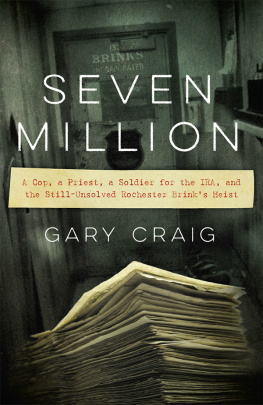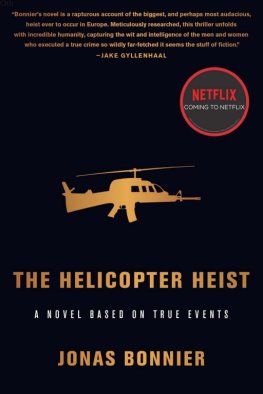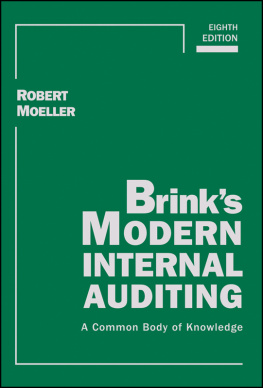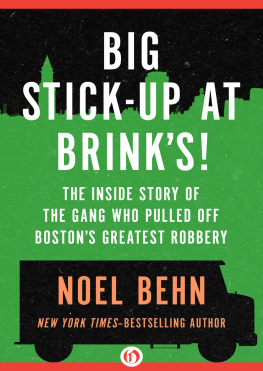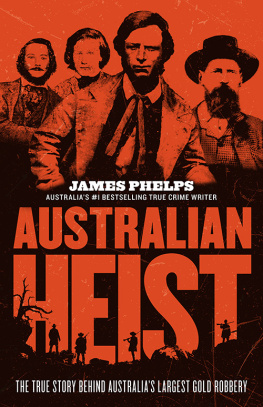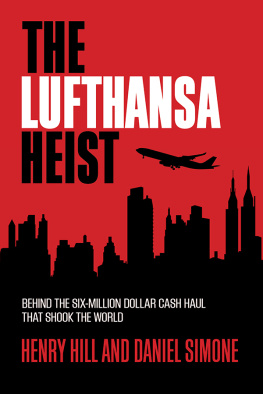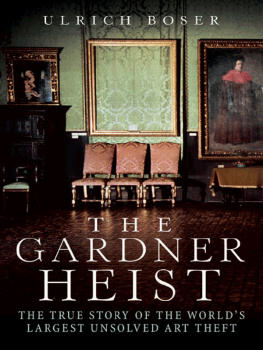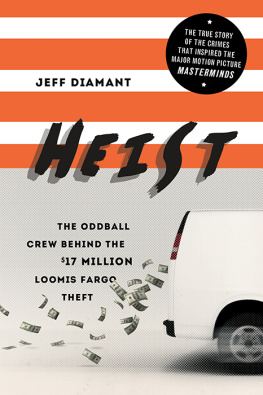
ACKNOWLEDGMENTS
This book has had a very long road to completion, and Ive been assisted through the years by many people. Theyve come from different backgrounds, different sides of the law, and different continents. Given that, the odds are good that, as I try to thank all of them for what theyve done for me and for this book, I will forget some. My apologies in advance.
Let me start with my colleague and friend Sean Lahman, who was kind enough to connect me with his agent, Robert Wilson. Thanks to Rob for having faith in this book, and for University Press of New England (UPNE) for showing the same faith. At UPNE, in particular, Id like to thank my editor, Stephen Hull, who helped me see better ways to arrange a book that had multiple narrative threads with converging chronologies.
Also at UPNE, thanks to production editor Amanda Dupuis and copy editor Jeanne Ferris, whose eagle eye caught plenty of slips.
The court files on this case are voluminousmore than a dozen thick books of trial transcripts and thousands of other pages. Typically, they are stored by the federal government at a midwestern site. However, my friends at the US District Court Clerks Office in Rochester, New York, have been kind enough to hold the documents there for several years, allowing me to come in and review them whenever necessary. Were it not for that kindness, this book would have been impossible for me to write.
Several friends were kind enough to read chapters along the way and to make suggestions. Thanks to them: Bill Clauss, Michael Wentzel, Janice Bullard Pieterse (whose early reporting on this case was also extremely helpful), Michael Tuohey, and Kathy Albertini.
As the text and my list of sources note, there have been individuals who did not want to be named in this project but were immensely helpful. My thanks to them.
In no particular order, Id like to thank:
From Rochester police circles, Capt. Lynde Johnston, Investigator Nicholas Mazzola, retired Investigator David Salvatore, retired Investigator Vito DAmbrosia, retired Investigator Bob Siersma, and two individuals who passed away in recent years, former Chief Roy Irving and former Police Major Bill Mayer. Relatives of Roy Irving were also helpful. The assistance given to me by retired Investigator Bill Lawler cant be overstated. Bill, who has been diagnosed with Huntingtons disease, is a man of remarkable spirit and cheer, an individual who can show all of us how to live. Numerous Rochester police officers past and present also provided information but asked not to be identified.
Investigator Chris Bittner from the Greece, New York, police also gave me more time than I probably deserved, and I owe a special thanks to State Police Investigator Tom Crowley, whose assistance was crucial when re-creating the investigation into Ronnie Gibbonss disappearance.
From the Federal Bureau of Investigation (FBI), retired Special Agent Bill Dillon, who was vital to the Brinks arrests, has been immensely supportive and helpful. Thanks also to Paul Hawkins, Richard Vega, Dale Anderson, Lou Stephens, Maureen Moskal, and Paul Moskal. And thanks to Cornell Adams, a former New York City cop who was part of the joint surveillance team, and to others who discussed the surveillance but asked not to be identified.
When I was writing about the Irish Republican Army, Ed Moloney always had time for me and connected me with former blanketman Ricky ORawe, who helped guide me through the horrors of Long Kesh. As the text notes, there were others who also gave me their time but chose not to be identified. Thanks for the many insights they provided.
When writing of the Irish Northern Aid Committee (NORAID), Damien McClinton, and Tom OConnors journey to Belfast, I was helped by Culver Barr, Joanne McClinton, friends of McClinton who asked not to be identified, and Mark LaPiana. Thanks to all.
Thanks to US Magistrate Judge Jonathan Feldman, US District Judge David Larimer, and attorneys Bill Clauss, John Speranza, and Felix Lapine. On the prosecutorial side, thanks to Christopher Buscaglia and Charles Pilato, andwhile she was not directly involved in this caseDistrict Attorney Sandra Doorley, who is familiar with some parts of the investigation. Thanks also to Joseph Cardone and the Orleans County Court Clerks Office. And a special thanks to investigators past and present from the Federal Public Defenders Office: George Thompson and Karen Francati.
Among the four Brinks defendants, Father Patrick Moloney has always been gracious with his time. As I have noted in the text, he says he is innocent; the jury decided otherwise. Whatever the truth, I thank him for his assistance. I attempted a number of times to speak to Sam Millar and Tom OConnorand also to OConnors wifebut had no success. Nonetheless, they were typically polite in how they responded, and I am grateful for that. Charles McCormick also shared his time and experiences with me, until we had differences over something I wrote in my newspaper coveragebut that makes me no less thankful to him. It was McCormick who informed me that FBI Special Agent Leonard Hatton died a hero on 9/11, running back into a World Trade Center tower to try to save others. While Hattons appearance in this book is brief, his heroism should not be forgotten.
Many people helped me re-create parts of Ronnie Gibbonss boxing career: Randy Gordon, Paddy Malone, Daniel McAloon, Hector Rocca, Jay Mwamba, and Bruce Silverglade. Thanks.
Ronnies friends were immensely helpful, especially Terry Quinn, who in 1996 first told me that Ronnie had disappeared; and Jim McCaffrey, a consummate gentleman who also gave me insights into Ronnies character. Special thanks also to Gary Brown, John Bomber Martin, Sophie Martin-Canning, Billy Devlin, and others who asked not to be identified. Terry Quinn also deserves tremendous thanks for helping Ronnies family reconnect with his daughter, Jolie. Quinn located her in New York City and brought Ronnies mom and daughter together.
Thanks to Patrick Farrelly for his insights into the Manhattan casinos, and to others who also worked there and helped me.
Christine Richards Daly was strong enough to discuss Gerald OConnors killing of her sister, Patricia, as was Patricias daughter, Denise. I cannot thank them enough for being so kind when revisiting something so tragic. And Tom Taylor deserves special thanks for trying to help find out whether OConnor was being truthful with his claims about Ronnie Gibbons (and Tom was smart enough to suspect OConnor wasnt).
In forensics circles, thanks to Michael Baden, Mary Jumbelic, and Anthony Falsetti. And I cannot overstate the value of the time Ron Brunelli, a true hero in this story, spent with me.
In Jefferson County, Peter Barnett was my tour guide and my primary source for reconstructing the investigation into the mysterious body parts. Thanks, Peter, and also thanks to the county Sheriffs Office for its assistance on numerous fronts. Several Cape Vincent residents familiar with the investigation asked not to be identified, but they also deserve my thanks. I now have a special place in my heart for the family of Ronnie Gibbons. Much of this book could not have been written without their help and the willingness of Frank and Rita to talk of their brother, his disappearance, and his murder. And the depth of my fondness for Ronnies mom, who also goes by Rita, is tremendous. It took only one telephone conversation with her for me to be struck by her kindness, strength, and longing to find her son. I had no choice after that conversation but to try to help as best I could.
I also need to thank the Democrat and Chronicle, where I work, for allowing me the use of photographs and for the opportunity to pursue this book. In particular, thanks to Karen Magnuson and Dick Moss for their support of this project, and to Mark Dwyer, David Andreatta and Mark Liu, who always encouraged me to undertake itand to complete it. Our immensely talented photographer Max Schulte and I have partnered on many projects, so it was natural that he would be with me at the exhumation and would do his typically stellar photographic work.
Next page
